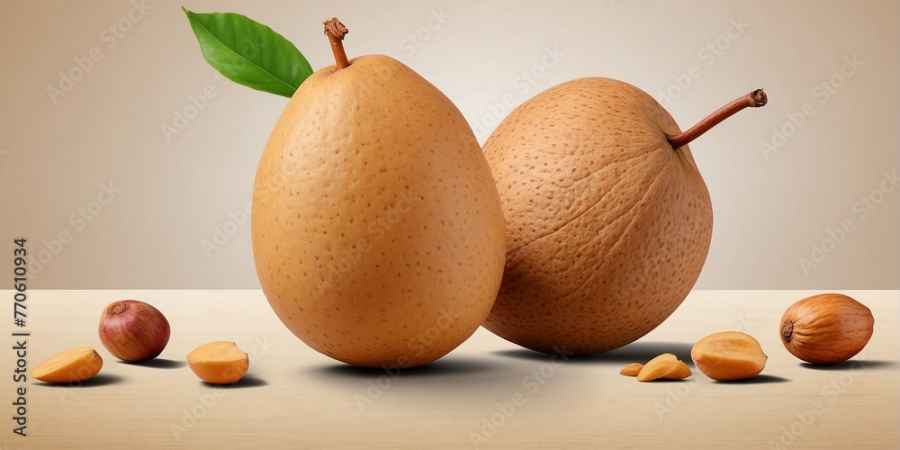

The sapodilla tree (Manilkara zapota), also known as sapota, chikoo, or naseberry, is a tropical evergreen that thrives in warm climates. This tree is native to southern Mexico, Central America, and the Caribbean, but it has spread to other tropical regions, including India, Thailand, Malaysia, and the Philippines. The sapodilla tree is a hardy, long-lived evergreen that can reach heights of up to 30 meters, although it is typically smaller when cultivated. It has a dense, symmetrical crown with glossy, dark green leaves that are elliptical in shape. These flowers give way to the sapodilla fruit, which is round or oval and typically measures 4 to 8 centimeters in diameter.The fruit's skin is thin and brown, resembling a potato, and is covered with a fine, sandpapery texture. Seedlings take about 5 to 8 years to bear fruit, while grafted trees can start producing within 3 to 4 years. Fertilization with a balanced, slow-release fertilizer can enhance growth and fruit production. Pests and diseases are generally not a major concern, though the tree can be susceptible to scale insects, leaf spot, and fruit flies. Beyond its nutritional value, sapodilla has various uses in traditional medicine and industry. The fruit is often recommended for its digestive benefits and as a remedy for diarrhea due to its high tannin content. The seeds are sometimes used as a diuretic, while the bark and leaves have been employed for their anti-inflammatory and antibacterial properties.The sapodilla tree is also known for producing chicle, a natural gum that was historically the main ingredient in chewing gum. Although synthetic substitutes have largely replaced chicle in commercial chewing gum, it is still used in some natural and organic products. In culinary applications, sapodilla fruit is enjoyed fresh, but it can also be used in a variety of dishes. The sweet, caramel-like flavor of the fruit makes it a popular ingredient in desserts such as cakes, pies, and ice creams. It can also be blended into smoothies, milkshakes, and juices. In some cultures, sapodilla is used to make jams, jellies, and syrups. Sapodilla has significant economic importance in the regions where it is cultivated. The fruit is a valuable cash crop for farmers, especially in India and Mexico, where it is widely grown and exported. The demand for sapodilla in both domestic and international markets has led to increased cultivation and investment in this crop. These antioxidants help in combating free radicals, thus reducing the risk of chronic diseases such as cancer and heart disease.
